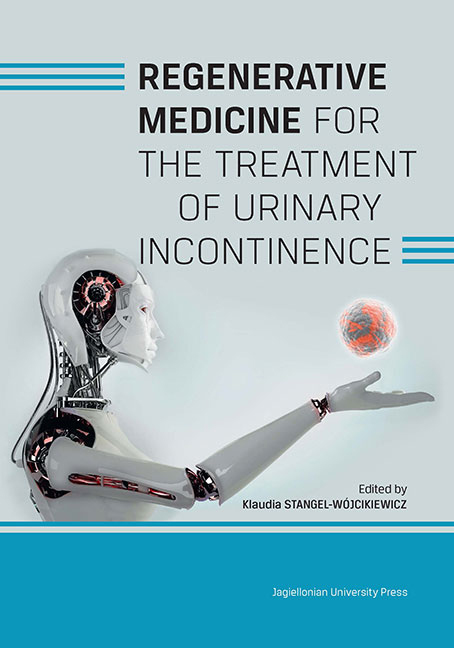Book contents
- Frontmatter
- Contents
- Preface
- Introduction
- Chapter 1 Urinary incontinence in women - outline of the problem
- Chapter 2 Anatomy of the urogenital system
- Chapter 3 Clinical types of urinary incontinence
- Chapter 4 Treatment of stress urinary incontinence
- Chapter 5 Regenerative medicine for the treatment of urinary incontinence
- Chapter 6 Virtual Patient system - simulations of clinical encounters for medical education. Case study of a woman with urinary incontinence
- Chapter 7 Development of a robotic tool aiding a new stem cell-based treatment for stress urinary incontinence in women
- Chapter 8 Difficulties and limitations of cell-based therapy for the treatment of urinary incontinence
- Summary
- List of authors
Chapter 2 - Anatomy of the urogenital system
Published online by Cambridge University Press: 03 January 2018
- Frontmatter
- Contents
- Preface
- Introduction
- Chapter 1 Urinary incontinence in women - outline of the problem
- Chapter 2 Anatomy of the urogenital system
- Chapter 3 Clinical types of urinary incontinence
- Chapter 4 Treatment of stress urinary incontinence
- Chapter 5 Regenerative medicine for the treatment of urinary incontinence
- Chapter 6 Virtual Patient system - simulations of clinical encounters for medical education. Case study of a woman with urinary incontinence
- Chapter 7 Development of a robotic tool aiding a new stem cell-based treatment for stress urinary incontinence in women
- Chapter 8 Difficulties and limitations of cell-based therapy for the treatment of urinary incontinence
- Summary
- List of authors
Summary
Anatomy of the pelvic diaphragm
The correct support of internal genital and urinary organs, including the urethra, is ensured by the muscles and fascia of the pelvic floor, ligaments, and other connective tissue components. The pelvic floor is closed by muscles forming the pelvic diaphragm, which is composed of the levator ani and coccygeus muscles. The muscles are partly united in the medial line, covering the urethra, vagina and anal canal in the female. The major portion of the pelvic diaphragm is formed by the levator ani muscles, covered with the superior and inferior fascia of the pelvic diaphragm. The anterior portion of this diaphragm has a fissure termed the porta levatoria for the passage of the urethra in the male, and the urethra and vagina in the female [1].
The pelvic diaphragm is formed mainly by the paired muscle, levator ani, and has a funnel shape with the apex oriented towards the anus and coccyx. Damage to this muscle plays a crucial role in the mechanism of faecal and urinary incontinence. As previously mentioned, the anterior portion of the pelvic diaphragm is incomplete, and in the posterior portion the muscles unite in the anococcygeal ligament. The levator ani is not a homogeneous flat muscle and consists of four components:
- the puborectalis muscle;
- the pubococcygeus muscle;
- the ilieococcygeus muscle;
- the rectococcygeus muscle.
The puborectalis muscle, most important for the stability of the urethra, arises from the inferior ramus of the pubic bone, laterally to the pubic symphysis, runs to the posterior and inferior direction, and reaches the anterior and lateral wall of the rectum. Anteriorly, between the right and left side muscle fibres, there is a hiatus for the passage of the vagina in the female. The puborectalis muscle enfolds the dorsal surface of the rectum. Most likely, components of the levator ani and urinary sphincter arise from the puborectalis muscle [2].
- Type
- Chapter
- Information
- Publisher: Jagiellonian University PressPrint publication year: 2016



